Johnny Kon — The Chinese drug lord who took over the heroin trade in New York
In the ‘80s, a man of humble origins — Johnny Kon — started a new golden age for Chinese-American street gangs in New York. He amassed an unfathomable amount of wealth by successfully smuggling tons of heroin from the Golden Triangle — Asia’s Badlands, where triads make the law and any sane lawman stay away — into New York.
Kon had so much money he laughed away losing $1 million in a Manila casino, donning diamond-and-gold watches, tailored suits and handmade ties. He lived in outrageously expensive villas and lived a cosmopolitan life travelling between Hong Kong, New York, Manilla and Bangkok, involving his entire family from his wife to his son and sister into the network.
Together with his Flaming Eagles — an international gang reminiscent of an ‘80s rock band, which he united from a loose group of mainland Chinese street gangs that instilled fear even in the Chinese triads — he ran an empire spanning the United States, China, Bolivia, and Panama.
Johnny Kon's involvement in the United States marks a rare instance of a Chinese triad's activities being documented in the country. What makes Kon's story particularly intriguing is its intersection with numerous key historical events, like the Vietnam War, Typhoon Ellen and the end of the American Mafia in New York. Despite frequent internal conflicts that often resulted in violent outcomes for long-standing associates, Kon's actions were underscored by a consistent adherence to his own moral and ethical codes, portraying him not merely as ruthless, but as a complex figure guided by principles.
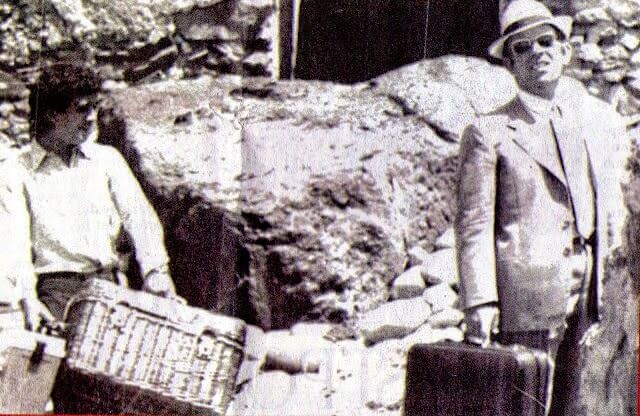 Gaetano Badalamenti, a pivotal figure in the Sicilian Mafia, played a central role in monopolizing the international heroin trade through the infamous Pizza Connection. His operations tightly integrated Sicilian resources with U.S. markets, establishing a formidable narcotics empire across continents.
Gaetano Badalamenti, a pivotal figure in the Sicilian Mafia, played a central role in monopolizing the international heroin trade through the infamous Pizza Connection. His operations tightly integrated Sicilian resources with U.S. markets, establishing a formidable narcotics empire across continents.
How the Chinese briefly outwitted the Italian mafia
All but a trace of the world’s heroin stock comes from the Golden Triangle. Since the Vietnam War, the heroin trade in the United States had been almost exclusively dictated by the European-based Sicilian mafia. But for a brief period, the monopoly was in the hands of the Chinese, who bypassed the long silk road from the Golden Triangle into Europe by directly smuggling from Thailand into the United States.
In 1984, Spanish authorities arrested Gaetano Badalamenti in Madrid. He was a boss in the Sicilian Mafia. He had been seen boarding a plane in Chicago after they looked for him in Brazil, where he was thought to set up cocaine trafficking operations in South America. At the time he was the main suspect in one of the biggest heroin trafficking networks since the “French Connection”.
Tony Cheuk is an animator and filmmaker making Super Wok Explosion, a unique animated web-series about Chinese organized crime. On this website, you can find articles about Asian organized crime, Chinese tongs and triads. You can also learn about the universe of the series. If you have an interest in organized crime and would like to learn more about the project, click here!
Wiretaps in the Midwest
The past months, officers of the US Drug Enforcement Administration and Federal Bureau of Investigation had recorded the phone numbers of all phone calls across phone lines in the Midwest. Some of the phone numbers recorded were linked to phone numbers written on notes of arrestees pockets in some of the world’s largest heroin seizures.
It was discovered that the American mafia transported kilos of heroin through ordinary pizza parlours in the Midwest. Drugs and cash made their way back to New York via cars and buses. In eight years, the American mafia laundered $60 million dollars in small denomination dollar bills in Switzerland, Italy, Turkey and back to New York.
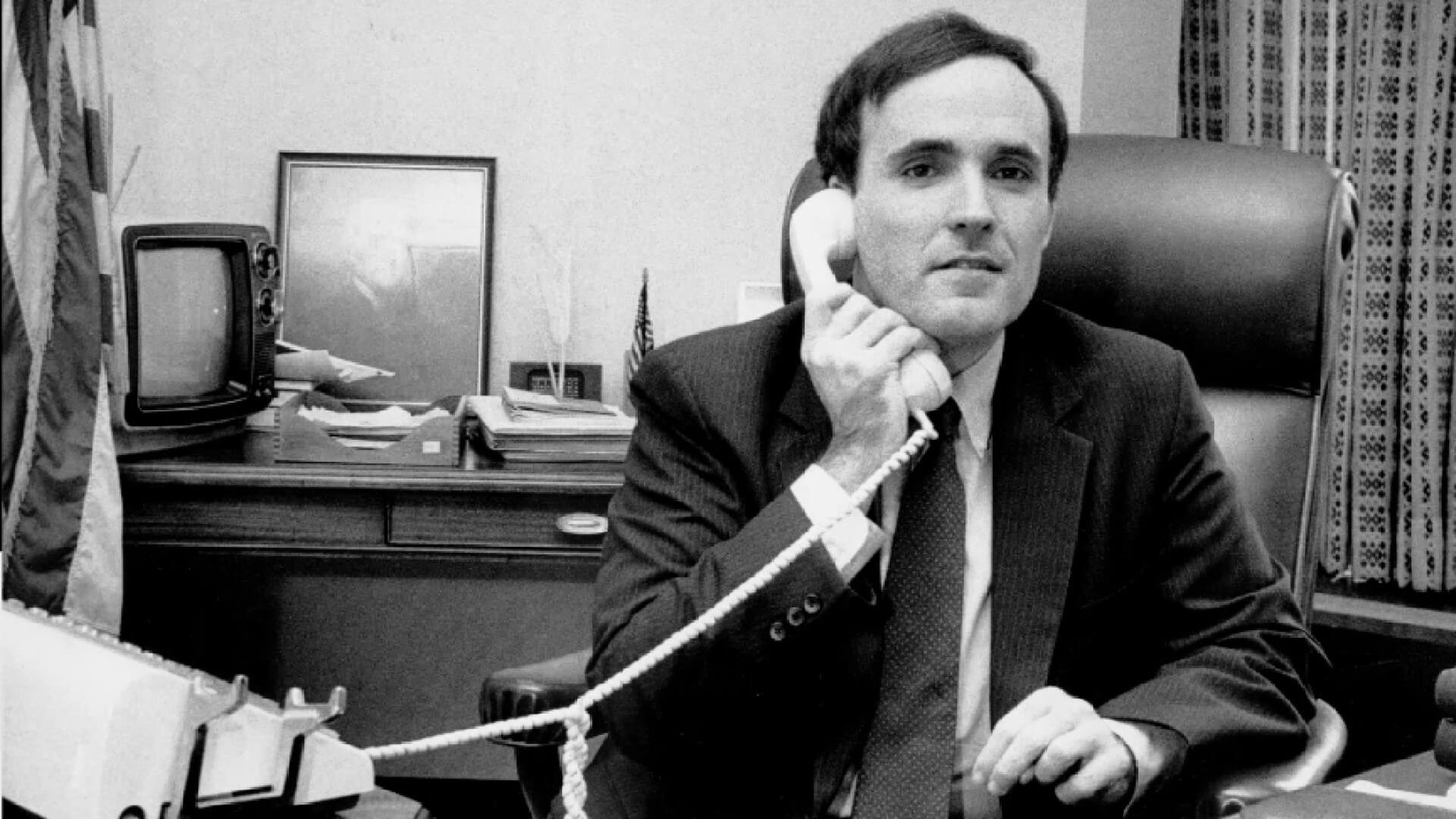 As the U.S. Attorney for the Southern District of New York, Rudy Giuliani spearheaded the prosecution in the landmark Pizza Connection trial. It was one of the largest and most complex criminal trials in U.S. history. Lasting nearly two years, it involved hundreds of witnesses and resulted in multiple convictions of key mob members.
As the U.S. Attorney for the Southern District of New York, Rudy Giuliani spearheaded the prosecution in the landmark Pizza Connection trial. It was one of the largest and most complex criminal trials in U.S. history. Lasting nearly two years, it involved hundreds of witnesses and resulted in multiple convictions of key mob members.
The case went in the books as the “Pizza Connection Trial”. It worked like this: The Sicilian Mafia converted morphine paste from Turkish suppliers into heroin through their Palermo-based labs. The heroin was then smuggled into the U.S. inside tins of San Marzano tomatoes. The cans of tomatoes shipped to pizza parlours in rural towns across the Midwest.
The impact on the Mafia of these cases has been devastating. If this continues, there's not going to be a Mafia
But in 1984, Pizza Connection Trial ended this. Rudy Giuliani called the trial “a tremendous victory in the effort to crush the Mafia. Five years ago nobody would have thought it possible to convict the head of the Sicilian Mafia and the head of a major part of an American Mafia family.” He added that “The impact on the Mafia of these cases has been devastating. If this continues, there's not going to be a Mafia”.
But in reality, this brief moment of bliss ignored what was already going on. Drugs would always find their way into America. Organised crime would find a new way to deceive the authorities.
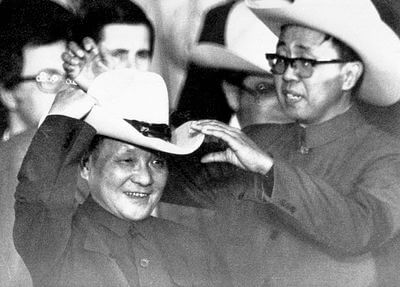 Deng Xiaoping’s “Open door policy” opened China to the West yet again, after the Cultural Revolution swept over China and kicked out any western influences.
Deng Xiaoping’s “Open door policy” opened China to the West yet again, after the Cultural Revolution swept over China and kicked out any western influences.
As China opened its doors to the west, Chinese migrants flourished to New York
In 1978, following Mao Zedong’s death, Supreme Leader Deng Xiaoping initiated China’s “Open Door Policy”. Amidst a tumultuous situation, Deng Xiaoping made short work of Mao’s communist policies and opened the doors of China to the international community to introduce capitalism. Many Chinese were encouraged to migrate to foreign countries to establish “new migrants” communities. When the United States relaxed their strict immigration laws, many Chinese decided to migrate to places like New York.
New York in the ‘80s was a dark place. The climate followed a recession that was caused by the Oil Crisis and the Vietnam War. The crime-rate was high and New York had become the murder capital of the world.
Most people living in New York Chinatown were elderly single men. Under US migration laws it was hard for Chinese women to move to the United States. A new influx of migrants was put to a stop and the population aged. But now, Snakeheads smuggled hundreds of young Chinese to places like Chinatown.
 In the 1980s, New York City's Chinatown was marked by significant gang activity, including the Ghost Shadows and Flying Dragons, which led to frequent violent clashes and contributed to a broader sense of insecurity. Economic hardships and strained police-community relations further complicated the neighborhood's challenges, despite its vibrant cultural identity.
In the 1980s, New York City's Chinatown was marked by significant gang activity, including the Ghost Shadows and Flying Dragons, which led to frequent violent clashes and contributed to a broader sense of insecurity. Economic hardships and strained police-community relations further complicated the neighborhood's challenges, despite its vibrant cultural identity.
From Benevolent Associations to Profit Seekers
Chinatown was a dangerous place. Gangs were prevalent and the working class population was poor. New Chinese migrants continued cultural practices such as prostitution and gambling in the United States. And these houses of gambling and prostitution were controlled by tongs.
Tongs were associations that were opened at the start of the century in order to support migrants. In the ‘80s, they acted as benevolent associations, but in reality, they really just wanted to make money. The tongs competed with each other over territory and gambling dens. But on the surface they were benign associations. So instead they hired street gangs to do their dirty work.
Two of these gangs were called the Ghost Shadows and the Flying Dragons, who hated each other. They waged bloody skirmishes in the alleys of Chinatown, pitting the community against each other.
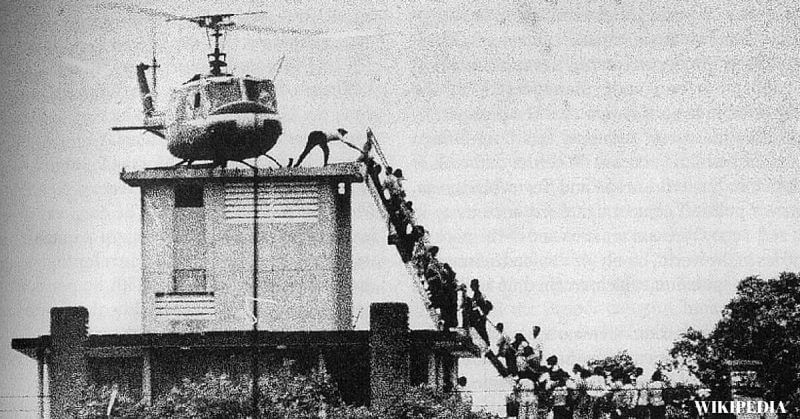 The Fall of Saigon in April 1975 marked the end of the Vietnam War, as North Vietnamese forces captured the city, leading to the unification of Vietnam under communist control. This pivotal event triggered a mass exodus of civilians and the dramatic evacuation of American and allied personnel, symbolizing a profound shift in regional and global politics.
The Fall of Saigon in April 1975 marked the end of the Vietnam War, as North Vietnamese forces captured the city, leading to the unification of Vietnam under communist control. This pivotal event triggered a mass exodus of civilians and the dramatic evacuation of American and allied personnel, symbolizing a profound shift in regional and global politics.
Kon plucked the fruits of the Vietnam War
In 1965, a man called Kon Yu-Leung ran a fur business in Hong Kong. Friends called him Johnny Kon. Later, a friend would bring him to Saigon, where the United States military was present during the Vietnam War. Here, he was introduced to different Americans. Because he made a good impression and his friend had many connections, Kon secured many contracts with the US military and controlled things at the base.
Kon was well-off. Within a few years, he was running a tour service for American soldiers, providing services for Americans travelling between Hong Kong and Saigon. He took home $ 250.000 every month tax-free, because he was working for the Americans.
Kon’s return to Hong Kong
Ten years later, Kon returned to Hong Kong. He left on a boat just three days before the communists took over. In Hong Kong, he tended to his fur business. Hong Kong in the ‘70s was a flourishing city, but it was a corrupt place. Anything could be bought with money, and corruption was prevalent throughout the echelons of the whole government and police force. Kon had many connections because he brought Western tourists to the various establishments, so he did not have to pay any taxes to the gangs or police that controlled Hong Kong.
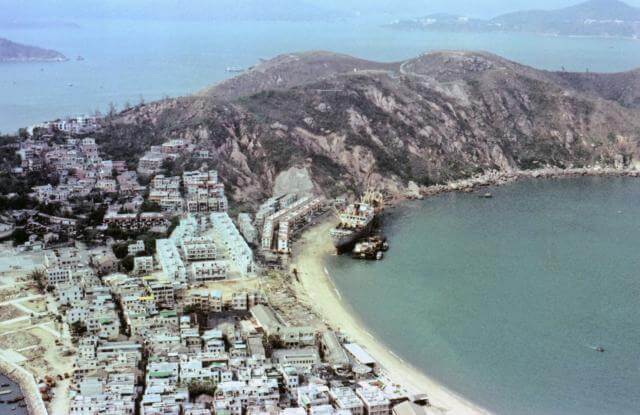 In 1983, Typhoon Ellen struck Hong Kong with devastating force, causing significant destruction and loss of life, while the concurrent financial recession exacerbated the city's economic challenges, deepening the impact on businesses and residents alike. 2,000 people lost their home.
In 1983, Typhoon Ellen struck Hong Kong with devastating force, causing significant destruction and loss of life, while the concurrent financial recession exacerbated the city's economic challenges, deepening the impact on businesses and residents alike. 2,000 people lost their home.
The financial recession caused by Typhoon Ellen in Hong Kong
In the late 1970’s, Kon owned a tannery, a post exchange and a catalogue business. In 1983, the United Kingdom ended up in a stalemate with China about Hong Kong’s sovereignty. Typhoon Ellen had just swept over Hong Kong.
On Saturday, the Hong Kong dollar plummeted. Kon had invested much of his money in Hong Kong real estate. As a financial crisis swept over Hong Kong, he lost a lot of money. Kon said he owed over 30 to 40 million Hong Kong dollars to debtors.
Kon had to do something and he decided to invest in a foreign country. He opened a fur trading company in New York’s fur district.
From Hong Kong to New York
In the ‘80s, Kon moved to New York. This is where he met Charlie Wu and John Routollo. John Routollo was a sergeant in the New York Police Department. He was in charge of the pistol licensing division. As he ran the department, he sold many gun licences to Chinese organised crime figures.
Later, Kon would seek out his connections in Hong Kong. He knew many people at night clubs and other establishments. He met up with many gangsters and told them that he would buy stolen goods from them and sell them in America. Here, he met a bunch of men who were part of Big Circle Gang.
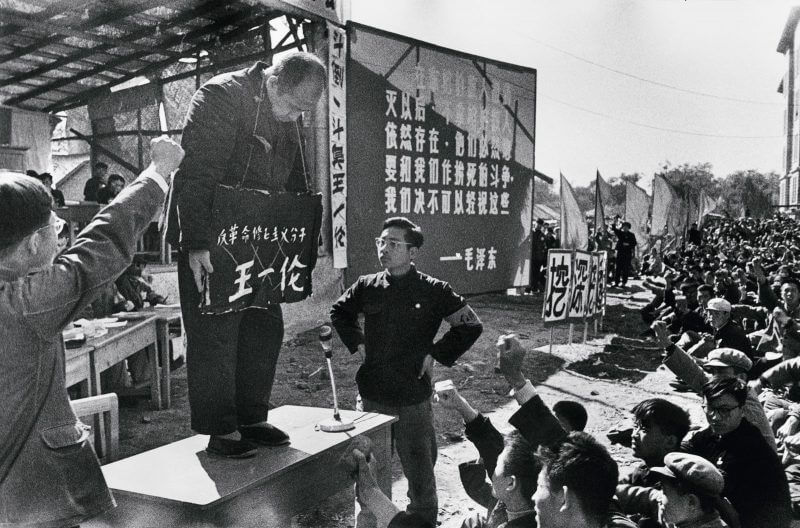 During China's Cultural Revolution in the 1960s, the Red Guards, a fervent paramilitary student group, zealously sought to purge the nation of the "old ways," targeting cultural relics, education systems, and traditional practices in a radical campaign to reshape Chinese society.
During China's Cultural Revolution in the 1960s, the Red Guards, a fervent paramilitary student group, zealously sought to purge the nation of the "old ways," targeting cultural relics, education systems, and traditional practices in a radical campaign to reshape Chinese society.
Chinese Communist Gangs turned Crime Syndicate
During the Cultural Revolution, groups of students were mobilised as a paramilitary student movement that would cleanse the New China of any Capitalist influences and Old Ideas. They were called the “Red Guards”. Mao first supported them and bent the movement to his will, but later abolished the movement, because it was impossible to keep them in check. Counter-revolutionary splinter movements continued to exist. But as China left behind the old communist ideas of Mao, the revolutionary groups became a melting pot for rebellious criminal elements and formed Big Circle Gang, a loose network of criminal cells that thwarted the much older secret brotherhoods of China; the Triads.
Once you got guan shi, you have faces. I am very powerful , so I have a lot of guan shis. I use these connections to make very strong business.
Kon knew a lot of people and had many connections and he used those to run businesses. He said: “Once you got guan shi, you have faces. I am very powerful , so I have a lot of guan shis. I use these connections to make very strong business.”
How Kon founded the Flaming Eagles
In 1982 and 1983, Johnny Kon set up businesses and financing operations in Hong Kong. He provided guns and swore to pay for anybody who got in trouble. One day, he sat down with his business associates in a club. They talked about how selling stolen jewellery ran them a 25 to 30 percent profit margin. They speculated about how drugs would run even more.
The early ‘80s were a tumultuous time. There were many gangs. Some of them fought over control of jewellery stores. Sometimes more than one gang would attack the same store at a time. Kon recruited members of Big Circle Gang into his flock. He put them on the payroll of his fur business. They called themselves the “Flaming Eagles”. The Big Circle was a thorn in the eye of the triads, who traditionally had a monopoly on organised crime in China.
 In the 1970s and 80s, Hong Kong was a city under the dual shadow of police and triad gangs, each exerting significant influence over its streets and economy, while simultaneously emerging as a pop cultural powerhouse with flourishing cinema, music, and theatre scenes that captivated audiences regionally and globally.
In the 1970s and 80s, Hong Kong was a city under the dual shadow of police and triad gangs, each exerting significant influence over its streets and economy, while simultaneously emerging as a pop cultural powerhouse with flourishing cinema, music, and theatre scenes that captivated audiences regionally and globally.
A higher authority than the triads
Triads were secret societies with intricate rituals and strict hierarchies, like sacrificing roosters during initiation ceremonies and inciting poems. Big Circle Gangs had none of that. They rejected authority and their organisation followed no structure. They were mostly radical young men bound together by their zealous mission to root out any western influence and capitalism. They did as they liked and worked together with other cells only when absolutely necessary. They did not withhold violence and drew a lot of attention.
Some triad groups like the 14K would even recruit these big circle gang cells into their ranks as muscle, because they would not shun from any means necessary to reach their goals. They made the perfect foot soldiers.
The turmoil and chaos created by the strife between the triads and the big circle gangs made Kon decide that this would be a good time to unify the gangs, as they had plenty of power and money. Kon said “We will become a higher authority than the triads. If the triads give us trouble, we will use our guns, like .45 calibre and AK-47s.”
We will become a higher authority than the triads. If the triads give us trouble, we will use our guns, like .45 calibre and AK-47s.
The Initial Heroin Operation: Bangkok to New York
Although Kon became the de facto leader of the Flaming Eagles, he preferred to take a backseat. In his own words, he acted like a “behind the scenes advisor”. His friend, Ah Tung, was a cell leader of Big Circle Gang and became the visible leader. They unified and drew up oaths with ten to fifteen other leaders that were more strict than typical triads and enlisted about a hundred members.
Kon decided to move his investments to New York. He hired a lawyer to oversee his real estate. The Sicilian Mafia losing control of the heroin trade in New York created a vacuum.
A month after founding the Flaming Eagles, Kon bought their first heroin shipment from Bangkok in November of 1983. The seller called himself Mister Wong, who got the heroin from an area deep in the Thai jungle controlled by General Lee, the leader of a Thai militia engulfed in a perpetual revolution against the Thai government.
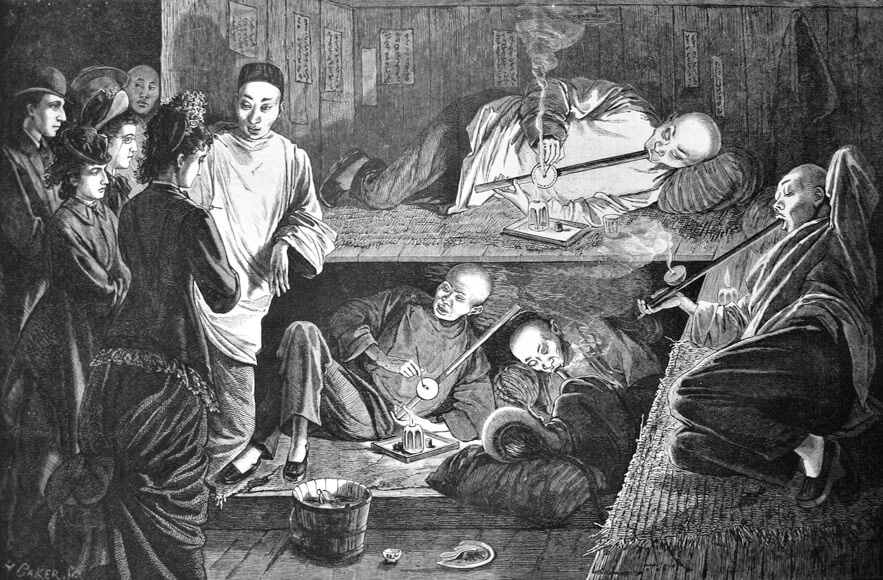 China's historical relationship with opium is complex, marked by centuries of medicinal use before its exploitation by British traders in the 19th century, leading to widespread addiction and social devastation.
China's historical relationship with opium is complex, marked by centuries of medicinal use before its exploitation by British traders in the 19th century, leading to widespread addiction and social devastation.
Expansion of Operations and Recruiting New Smugglers
Kon put the heroin in a suitcase, and it was taken from Bangkok to Malaysia, Singapore and then Toronto by a man called Yiu Sze Ning. This is where John Routollo took the suitcase to New York, and sold it to members of the Wo On Lok triad and members of Big Circle Gang.
Because of the success of their operation and there being demand for more, they tried again two months later. They hired a guy called Ronnie Yin, who had experience smuggling furs and jewellery for Johnny.
They put a smaller shipment of heroin in a suitcase and he took it on flights to Japan and eventually New York, where he handed it over to John Routollo. He would then sell the heroin to a member of Big Circle Gang.
The heroin that they smuggled to America they sold in New York or Pennsylvania. Yin and Routollo strapped the money into boxes and brought it to Johnny Kon in Hong Kong with ease.
Previously, the police did not search suitcases for contraband. One man, called Old Man Lau, told Johnny Kon that now they did. So he came up with the idea to hide the heroin in flower vases, and to ship them in containers. They put ten kilograms of heroin in vases, one kilogram each, and took it from Bangkok to Tokyo, to Mexico City and smuggled the heroin hidden in car doors across the Californian border.
The monopoly once held by the Sicilian mafia was now in the hands of the Chinese, marking a significant shift in the underworld's balance of power.
Lau Lau's decapitation
In 1985, Johnny Kon learned that an Italian diplomat had been arrested in Bangkok. He carried heroin in vases, just like Johnny. So he concluded that it must come from the same source. Kon decided to drop the scheme. He learned that two vases had gone missing. It was later discovered that they had been stolen by Lau Lau, so Kon ordered him killed. He could not trust him anymore.
The Flaming Eagles dispatched a hitsquad to Bangkok. They chopped off Lau Lau’s head and threw it in a river. Later, Kon heard that Lau Lau was beaten instead, so he wasn’t entirely sure of Lau Lau’s fate.
The Red Wa in Thailand
After Lau Lau died, Kon handed over the operation to Mr Suchin and his son in law, Pipot. They were supplied from the Golden Triangle and became the biggest heroin smugglers the DEA ever knew.
They were then approached by the Red Wa, who fought the Khun Sa. They were a Thai militia that controlled much of the no-man’s land poppy farms in the Golden Triangle. They offered Kon and Pipot to set up a joint venture.
They built a refinery and appointed Pipot to run it. And Kon was made to run the distribution. The money the Red Wa made was used to buy guns in order to fight the Khun Sa.
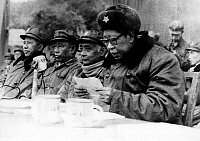 The Red Wa State Army, led by Thakin Ba Thein Tin, played a significant role in the illicit drug trade, particularly in the production and trafficking of heroin and methamphetamine. Their activities fueled regional instability and conflict, intertwining with the communist insurgency in Myanmar during the mid-20th century.
The Red Wa State Army, led by Thakin Ba Thein Tin, played a significant role in the illicit drug trade, particularly in the production and trafficking of heroin and methamphetamine. Their activities fueled regional instability and conflict, intertwining with the communist insurgency in Myanmar during the mid-20th century.
Kon's escape to Taiwan
The DEA had to hunt down Mr Suchin and Pipot. They were arrested in Singapore. Mr Suchin and Pipot became the first people to be extradited from Singapore.
Kon decided to use fishing trawlers to take heroin from Bangkok to Hong Kong. In November 1984, he sent a boat to Hong Kong. The boat was then intercepted by a marine patrol. They found no fish, but 126 kilograms of heroin and guns.
Kon was told by a friend in the police force that seven members had been arrested. Kon became paranoid. There were almost no guns in Hong Kong at that time. This was the first big shipment of guns and it became a very big case. So Kon thought the police would come after him.
Kon fled to Taiwan after telling Ah Tung and the others, because Taiwan did not extradite between Hong Kong. He told them to leave Hong Kong and hide.
Kon arranged fake passports and arranged boats to take them to the United States, South America, Europe and Thailand. Kon told everybody that if they were arrested, Kon would pay them $100,000 not to mention Kon’s name.
 In the 1970s and 80s, Hong Kong saw intensive police crackdowns on triad societies as escalating gang violence and their pervasive influence on the local economy and politics prompted authorities to take decisive action to restore law and order in the bustling metropolis.
In the 1970s and 80s, Hong Kong saw intensive police crackdowns on triad societies as escalating gang violence and their pervasive influence on the local economy and politics prompted authorities to take decisive action to restore law and order in the bustling metropolis.
Ice buckets to Seattle
In 1985, they came up with a new plan to smuggle heroin. They put heroin in inconspicuous ice buckets. They shipped the ice buckets from Bangkok to Tokyo, to Chicago and then to New York. They did this five times.
The last time, they made a mistake. Instead of booking a flight to Chicago, they booked the shipment to arrive in Seattle. Customs performed a search and seized one-hundred-and-twenty units of heroin in June 1985.
Kon refused to kill a cop
Later, Kon learned that John Routollo had taken one of the flower vases from earlier and kept it for himself. Routollo told Kon that he was robbed and the heroin was taken from him.
Kon could not trust John anymore, though he would not kill a cop. He sent Big Circle cells to New York to replace Routollo. He sent two guys called Ah Fai and Ah Hoi to New York to set up distribution networks. A guy called Mui Tao was sent to Los Angeles. The team in the United States sold their heroin to Johnny Eng, the leader of the Flying Dragons in New York. They also sold heroin to the Ghost Shadows.
 In New York City during the late 20th century, the Flying Dragons gang was heavily involved in heroin trafficking, using their extensive network to facilitate large-scale shipments, significantly impacting the city's drug landscape and prompting targeted law enforcement responses.
In New York City during the late 20th century, the Flying Dragons gang was heavily involved in heroin trafficking, using their extensive network to facilitate large-scale shipments, significantly impacting the city's drug landscape and prompting targeted law enforcement responses.
Meeting the South American drug lords
Meetings were held in New York in the Spring of 1985 to establish business in Brazil, Bolivia, Paraguay, Panama and Argentina. Kon sent some of his people to Paraguay to learn how business was conducted. They offered a ten percent share of the profits to a general. In return, he would protect shipments from Hong Kong to Paraguay. They also tried to conspire with an airline cargo company in Panama, but it never happened.
Kon's retirement and Ah Tung's mistake
In 1985, Kon told everybody that he wanted to retire. He thought he had made enough money. Kon promoted Ah Tung to lead the group. But Ah Tung was stricter. He angered other leaders.
Ah Tung told Ah Fai, who was in charge of Bangkok, that he should go to South America. Ah Fai became jealous of Ah Tung and put out a contract to kill him.
Kon arranged a settlement meeting in Tokyo in July 1985. All the leaders came to Tokyo, but Ah Tung did not show up.
A month later, Ah Tung was planning to fight the Flaming Eagles. Kon assembled all the leaders in Frankfurt and ordered Ah Tung to come to the meeting. Ah Tung did not come again. So Kon ordered Mui Tao to kill him.
Mui Tao and two more flew to Manilla to kill Ah Tung. He called Kon and told him Ah Tung was finished.
Kon now tried to ship heroin in picture frames. A girl who owed gambling money to the Flaming Eagles was used as a mule. She landed at Kennedy Airport in New York. During a check-up, customs were alarmed when they concluded that the picture frames must be too heavy. The girl was arrested and the heroin was confiscated.
 During New York's heroin epidemic, police intensified efforts to dismantle the drug trade by targeting both street-level dealers and high-level distributors, implementing stricter surveillance, undercover operations, and collaboration with federal agencies to curb the widespread availability and devastating impact of heroin on the community.
During New York's heroin epidemic, police intensified efforts to dismantle the drug trade by targeting both street-level dealers and high-level distributors, implementing stricter surveillance, undercover operations, and collaboration with federal agencies to curb the widespread availability and devastating impact of heroin on the community.
Heroin in shipping containers
Kon decided to put heroin in shipping containers instead. They filled a container with T-shirts, furniture and wine boxes and hid heroin away in various places.
Shipping containers were used to ship heroin to Tokyo, Panama, Miami and New York. This method was considered less risky, but still about ten percent of the shipments were seized. 136 kilograms were seized in Bangkok.
Cocaine is "bad luck"
After this, Kon looked into other businesses and the Flaming Eagles decided they would look into smuggling cocaine. They had Bolivian connections to make this work. Kon, who was hesitant, said cocaine was “bad luck” and decided against it.
it only pushed us to smuggle more drugs to make up the losses
Later, Kon lost forty kilograms of heroin in a seizure in Miami and members were arrested in New York. According to Kon, up until now, half of the shipments were lost to law enforcement or stealing. But it didn’t discourage them from continuing. He said “it only pushed us to smuggle more drugs to make up the losses”. Kon’s share of smuggling totalled over $10 million dollars, which he invested in the United States. Kon just felt unlucky. No method was a hundred percent safe.
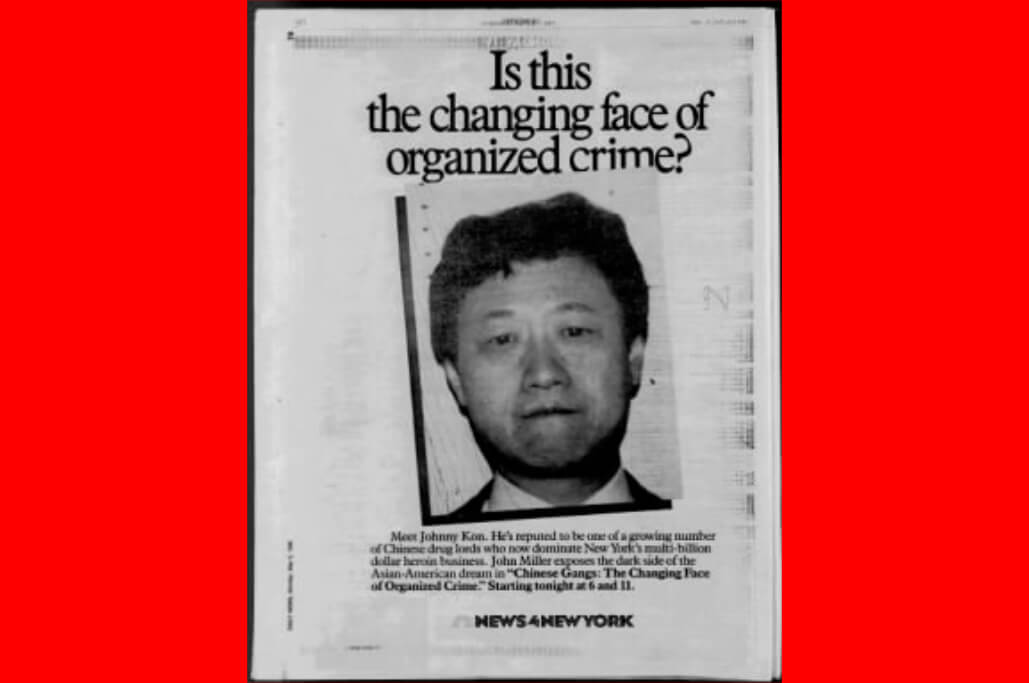 Johnny Kon, after being arrested alongside his corrupt partner John Routollo, chose to collaborate with the police, turning against Routollo who had escalated their criminal enterprise by demanding the assassination of a prosecutor—a line Kon refused to cross. This pivotal decision marked Kon's dramatic shift from criminality to cooperation, significantly impacting the legal outcomes and disrupting their joint operations.
Johnny Kon, after being arrested alongside his corrupt partner John Routollo, chose to collaborate with the police, turning against Routollo who had escalated their criminal enterprise by demanding the assassination of a prosecutor—a line Kon refused to cross. This pivotal decision marked Kon's dramatic shift from criminality to cooperation, significantly impacting the legal outcomes and disrupting their joint operations.
End of the Line
In March 1988, four police officers gathered outside of John Routolo’s home in Montclair, New Jersey. They had been told that they were going to arrest John Routolo, a fellow police officer. But they could do this only when his co-defendant, Johnny Kon, had been indicted. At around 11:00 PM they were informed Kon had been caught. The four police officers went on to arrest John Routollo.
We paid a lot of money to some special people. We have to use them. To try and get them to help. That is very important.
Johnny Kon testified and pleaded guilty. He was subjected to an extensive hearing in which Kon told Washington the ins and outs of his operation.
Kon said that he turned, because Routolo had made up a plan to kill the judge and Kon’s prosecutor. This was where he would draw the line, because in his words, they would “kill the people on the street, but not for the government”.
Kon went on to explain in detail how they played the system for a decade to keep the drugs off the radar of customs, the tricks they used to avoid detection and the weaknesses in the system. Kon told the committee that it would be impossible to smuggle drugs without the help of government officials. He said “We paid a lot of money to some special people. We have to use them. To try and get them to help. That is very important.”
Kon's legacy
Johnny Kon's saga in the annals of organised crime serves as a vivid chapter on the capabilities and resourcefulness of criminals. His operation underscores the impact one man’s ambitions can have on the underworld.
Kon’s ingenuity in bypassing the entrenched Sicilian Mafia to control a significant portion of the heroin trade not only shifted the balance of power but also highlighted the global nature of drug trafficking networks. His ability to exploit geopolitical landscapes and technological gaps in law enforcement illustrates the challenges that continue to confront global security agencies.
For a short while, the Chinese held a monopoly on drugs.
Drugs would always find their way into America. Organised crime would find a new way to deceive the authorities.
Modern Chinese Organized Crime
Today, the landscape of Chinese organised crime has evolved. Kon imported Chinese organised from Hong Kong and it changed the nature of Chinese criminal syndicates in the United States forever. The streets were no longer dominated by the children of Chinese migrants who fought over territory. The structure and stoic tradition of the triads proved too stiff. And today we find Chinese organised crime to be more decentralised but interconnected than ever.
What do you think? Was Johnny Kon a big fish or small fry? Let me know on Instagram, Twitter or Facebook.
Super Wok Explosion is a unique animated web-series about Chinese organized crime. The project is funded entirely by its audience. On this website, animator Tony Cheuk likes to share information about Asian organized crime—and world-building of the universe of the series, Chinese tongs and triads. If you're interested in learning more about the project, you can click here.
Further reading
- THE DRAGONHEAD: The Godfather of Chinese Crime—His Rise and Fall by John Sack
- Vicious Circles: Gang Legacy of the Cultural Revolution, Peng Wang
- Asian Organized Crime: The New International Criminal : Hearings before the Permanent Subcommittee on investigations of the Committee on Governmental Affairs United State Senate
- How The Mafia’s ‘Pizza Connection’ Pumped America Full Of Heroin With The Help Of Neighborhood Pizzerias
- 18 GUILTY IN 'PIZZA CONNECTION' TRIAL